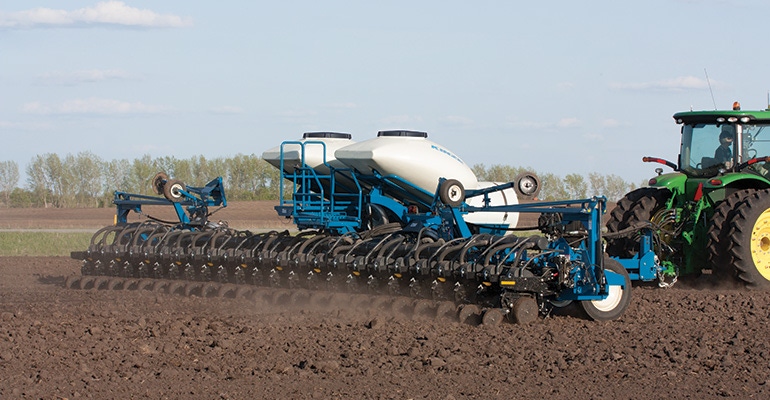January 8, 2018

Sponsored Content
Windows of opportunity are narrow in the planting season, when time is money and farmers race the clock to get their seed in the ground. Proper maintenance is critical to make sure planters will operate at peak performance during this short time.
Dealing with unexpected breakdowns or repair issues during planting can mean costly downtime, so Kinze Manufacturing recommends not waiting until spring for basic maintenance that can be taken care of now.
“While it’s important for farmers to make sure their planter is mechanically sound in terms of the nuts and bolts, it’s also essential to check the electronics and technology on today’s planters,” says Phil Jennings, Kinze Service Manager. “Both directly affect operational efficiency and the ultimately the bottom line.”
Jennings adds that parts discounts and service specials are often available at this time of year, which are also good reasons to make winter planter maintenance a priority.
Consistent performance starts with a planter that is in good shape. Before each planting season, Jennings cites six key areas to address so planters will be ready to roll this spring:
Technology Tune-ups – Turn on the monitor and scroll through the different operation screens to make sure that all of the sensors and modules register properly. Check the main power connections and relays, harness routings through doors and windows, and GPS connections.
Software Updates – Make sure you are running the most current version of the software in your monitor. Copy and purge old data that might cause confusion and can also slow down your monitor. A new software listing is available on most manufacturer websites, including Kinze.com, which offers the latest software at no cost and instructions for making the updates.
Seed Meters – Perform proper cleaning and storage, identify common wear points, follow meter testing recommendations and lubrication dos and don’ts.
Row Units – Inspect and adjust soil engaging components, meter driveline, clutches, gauge wheels, closing wheels and down pressure options.
Fertilizer And No-Till Attachments – Follow all clean out and winterization guidelines, opener maintenance and wear points. Adjust no-till coulters and residue managers for all conditions.
Frame – Inspect safety equipment, wheels and tires, hitch heights and markers.
“Although many of these maintenance issues, particularly the electronics, can be performed and tested in the workshop, it is also beneficial to perform field testing once weather conditions permit,” Jennings notes. “A true 1/1,000th acre field check after making any settings or adjustments to the planter is recommended.”
Jennings notes that farmers can refer to wear life and replacement recommendations listed in their planter operator’s manual. “Many Kinze dealers are offering planter clinics open to all farmers this winter at no cost. Check with your local Kinze dealer to determine if a clinic is available in your area,” he adds.
About the Author(s)
You May Also Like




